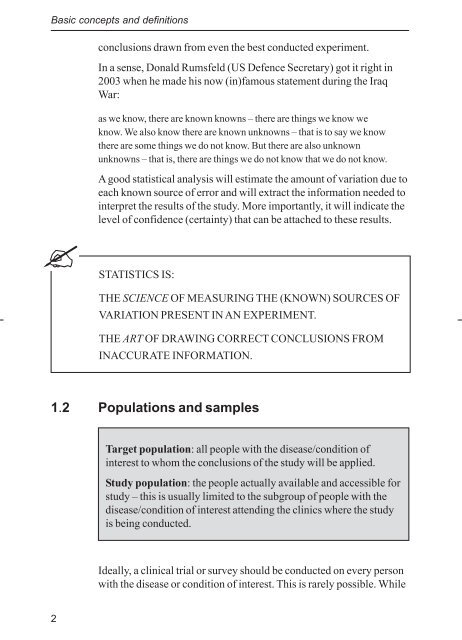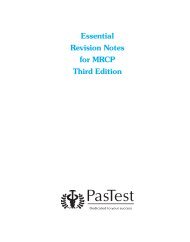essential statistics for medical examinations(final).pdf - PasTest
essential statistics for medical examinations(final).pdf - PasTest
essential statistics for medical examinations(final).pdf - PasTest
- No tags were found...
Create successful ePaper yourself
Turn your PDF publications into a flip-book with our unique Google optimized e-Paper software.
Basic concepts and definitionsconclusions drawn from even the best conducted experiment.In a sense, Donald Rumsfeld (US Defence Secretary) got it right in2003 when he made his now (in)famous statement during the IraqWar:as we know, there are known knowns – there are things we know weknow. We also know there are known unknowns – that is to say we knowthere are some things we do not know. But there are also unknownunknowns – that is, there are things we do not know that we do not know.A good statistical analysis will estimate the amount of variation due toeach known source of error and will extract the in<strong>for</strong>mation needed tointerpret the results of the study. More importantly, it will indicate thelevel of confidence (certainty) that can be attached to these results.STATISTICS IS:THE SCIENCE OF MEASURING THE (KNOWN) SOURCES OFVARIATION PRESENT IN AN EXPERIMENT.THE ART OF DRAWING CORRECT CONCLUSIONS FROMINACCURATE INFORMATION.1.2 Populations and samplesTarget population: all people with the disease/condition ofinterest to whom the conclusions of the study will be applied.Study population: the people actually available and accessible <strong>for</strong>study – this is usually limited to the subgroup of people with thedisease/condition of interest attending the clinics where the studyis being conducted.Ideally, a clinical trial or survey should be conducted on every personwith the disease or condition of interest. This is rarely possible. While2
















